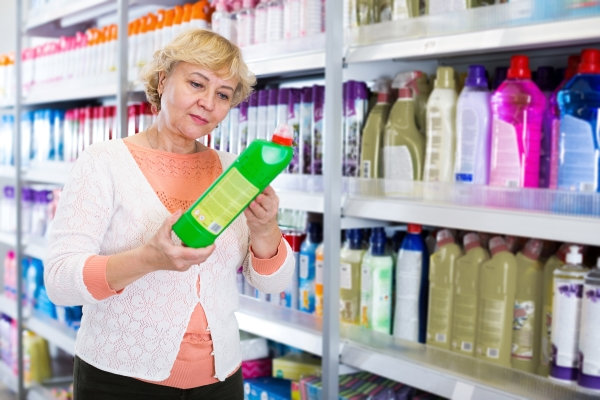
Proper storage of flammable liquids at home is crucial for safety. Rainbow Restoration outlines these essential steps to minimize risks.
|
It might be hard to imagine, but some of the most flammable materials in your home are liquid! Solvents, oil, alcohol-based products, aerosol cans, and beauty products—all commonly found in homes—may pose a danger to the health and safety of you and your family if stored inappropriately. According to one study by the National Fire Protection Association (NFPA), between 2014-2018, local fire departments responded to an average of 970 structure fires per year that began with flammable or combustible liquids within the home.
Don’t leave the storage of these solutions up to chance. Check out our recommendations for the safe storage of flammable liquids in your home.
Household Flammable Liquids: What Are They?
The Federal Hazardous Substances Act (FHSA) regulates the labeling of hazardous household products. Under the FHSA, substances that are combustible, flammable, corrosive, irritating, toxic, a strong sensitizer, or cause a substantial risk of personal injury or illness must be labeled as such.
In a home, this translates to products that include:
- Aerosol cans
- Gasoline
- Oils and lubricants
- Paint thinner
- Rubbing alcohol
- Turpentine
- Linseed oil
- Hand sanitizer
- Nail polish remover
- Stain removers
- Hairspray and beauty products
- Non-dairy creamer
- Cooking oil
- Kerosene
- And more.
This list is not all-encompassing, but it’s a good starting point. Also consider products stored in attached and detached garages, sheds, or ancillary buildings when assessing the risk at your property.
Sick of storing potentially hazardous cleaning products at your home? Utilizing a professional home cleaning service can substantially reduce the amount of chemicals and cleaning products you need to store in your home—since they provide the cleaning products and materials.
How to Store Flammable and Combustible Liquids at Home
It’s hard to imagine a life without any of the potentially flammable items listed above. Storing combustible or flammable liquids safely is all about mitigating risk. Implementing the storage strategies listed below in your home can help reduce your risk of fire.
Storage Dos:
- Store products like oils and lubricants in a well-ventilated space in your garage or, preferably, a detached shed.
- Store household items like cleaners and beauty products in a cool, dark space like a cabinet or closet.
- Choose a storage location that receives adequate ventilation.
- Keep an inventory of potentially hazardous liquids, so you always know what’s in your home, its quantity, and where it is.
- Ensure your home is equipped with working smoke detectors and fire extinguishers.
- Regularly change the batteries in your smoke and carbon monoxide detectors. A good ‘rule of thumb’ is to change the batteries when you change your clocks in the spring and fall.
- Practice safe disposal methods for oil- or cleaner-soaked rags, empty containers promptly, and more. Many of these products are considered household hazardous waste, meaning they cannot be put down the drain or flushed down the toilet, and must be disposed of at a designated collection site.
- Store all chemicals and hazardous liquids out of reach of children and pets.
- Consider purchasing a flammable liquid storage cabinet.
Storage Don’ts:
- Don’t store flammable liquids next to anything that ignites (lighters, matches, power tools, small engines, even kitchen appliances).
- Don’t store flammable liquids with ancillary fuel (think paper, fabric, or other highly flammable materials).
- Don’t hide combustible liquids away. Out of sight equals out of mind. Track these materials to ensure they are safely stored.
- Don’t stockpile hazardous or flammable materials. A good sale is no reason to keep extra, potentially dangerous materials on hand.
- Don’t leave flammable liquids near heat sources like heat vents or dryers. And never leave flammable liquids in the sun.
- Don’t store gasoline in anything other than an approved canister.
Related Content: Where Do House Fires Usually Start?
How to Handle a Flammable Liquid Spill
Uh-oh, have you accidentally spilled turpentine or a flammable cleaning liquid at home? Quick and safe clean-up is key to maintaining a safe environment.
The exact cleanup steps will depend on the type of liquid spilled. For small spills, it’s recommended that homeowners:
- Open doors and windows to increase ventilation.
- Wear protective gear, like plastic gloves and goggles.
- Use absorbent and non-reactive material, like kitty litter or sawdust, to soak up liquid.
- Dispose of the soaked material safely (this will look different depending on what is spilled).
- Clean any residue from the spill using soap and hot water.
For large spills contact a professional service immediately for remediation.
Related Topic: Should I Install a Home Fire Sprinkler System?
When Accidents Do Happen – Call the Pros
Even when safe storage practices are implemented, accidents can and do happen. If your home experiences damage from a flammable liquid spill, water intrusion, and/or a fire, the professionals at Rainbow Restoration can help you recover. We offer several restoration and remediation services like, fire, water, mold remediation, and more. Our restoration pros are available 24/7 to assist you with your emergency and to help restore your home to its normal state as quickly as possible. If you need help now request an appointment online or call us today!
